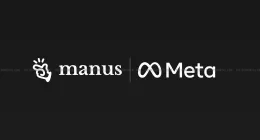PDFs (Portable Document Format) have been around for over 30 years now. Smartphones on the other hand, were not available until the end of the last decade. This means that one technology is exponentially more ‘archaic’ than the other, and thus, scrolling through PDFs on your phone is always a hassle. You gotta zoom in and zoom out, glide through pages with mismatched symmetries-it’s just a mess. However, Adobe’s latest ‘Liquid Mode’ brings the past and the present together by optimizing PDFs for your smartphone, so the experience of scrolling through a 100 page PDF is slightly more bearable.
Liquid Mode uses Adobe’s AI engine to analyze a PDF and automatically optimize it for the smartphone experience. How does it do that? Using Machine Learning of course. Liquid Mode uses ML to work its way through the PDF and identify parts of it, like headings, paragraphs, images, lists, tables, and more. Then, it automatically reformats text, images, and tables for quick navigation and consumption on small screens.
Moreover, once a PDF is converted, users will be able to tweak things like the font size and line spacing to their liking. If that is not enough, the mode will use the headers/structure it detects to build a tappable table of contents, which you can then click to directly pop into different sections.
To change a PDF, just open it using the Acrobat Reader. The app will then automatically try to detect if the particular file can be converted or not. If the answer is yes, the Liquid Mode button lights up. Tap the button and the file is sent to Adobe’s Document Cloud for processing and voila, the job is done.
But let’s be honest, who out of us uses the Acrobat Reader? What good is a great feature if we can’t even access it. Adobe realises this, and promises that it will roll out an API that’ll allow similar functionality to be rolled into non-Adobe apps down the road–CTO Abhay Parasnis told TechCrunch.
The best part about the whole experience is that the changed PDF is non destructive, which means that no information is lost in the process and you can just step out of the Liquid Mode to get back the original document.
The Tech Portal is published by Blue Box Media Private Limited. Our investors have no influence over our reporting. Read our full Ownership and Funding Disclosure →






